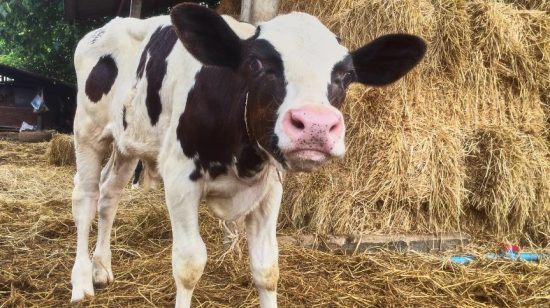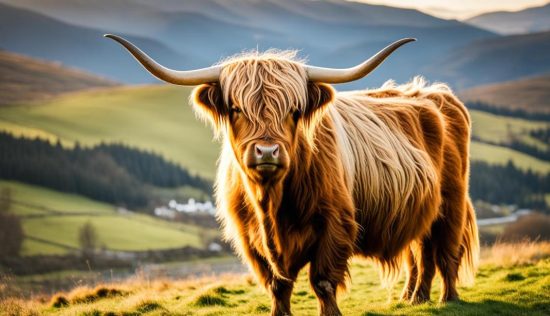How Long Does a Cow Live? A Comprehensive Guide
Uncover the lifespan of cattle with our detailed guide. Learn how long does a cow live and factors that influence their longevity.
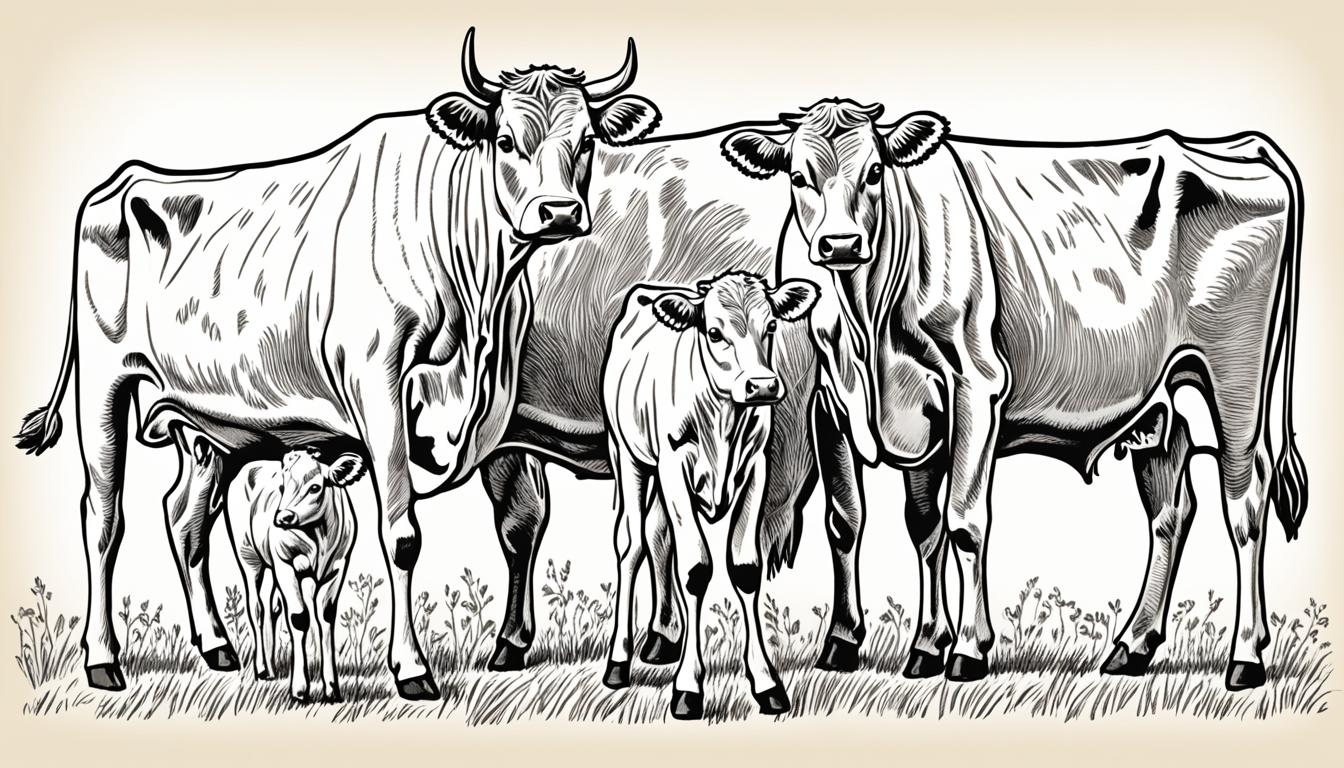
Have you ever wondered just how long a cow can live? The answer may surprise you! Cows have an average lifespan that spans several years, making them one of the longest-living animals on farms and ranches. Now, we will explore the various factors that influence the lifespan of cows and provide you with a wealth of information on their longevity. From understanding the differences between dairy and beef cattle to the impact of animal welfare and reproductive patterns, we will cover it all. So, whether you’re a farmer or simply curious about the lifespan of these fascinating creatures, let’s dive into the world of cow longevity and discover just how long these remarkable animals can live.
The Lifespan of Dairy and Beef Cattle
When it comes to the lifespan of cows, there are noticeable differences between dairy and beef cattle. Understanding these differences and the factors that influence their longevity is crucial for farmers and those interested in the welfare of these animals. Cows raised for dairy purposes, known as dairy cattle, have an average lifespan of around 5 to 7 years. On the other hand, beef cattle can live for an average of 8 to 10 years. It’s important to note that these are general averages, and individual lifespans can vary depending on various factors.
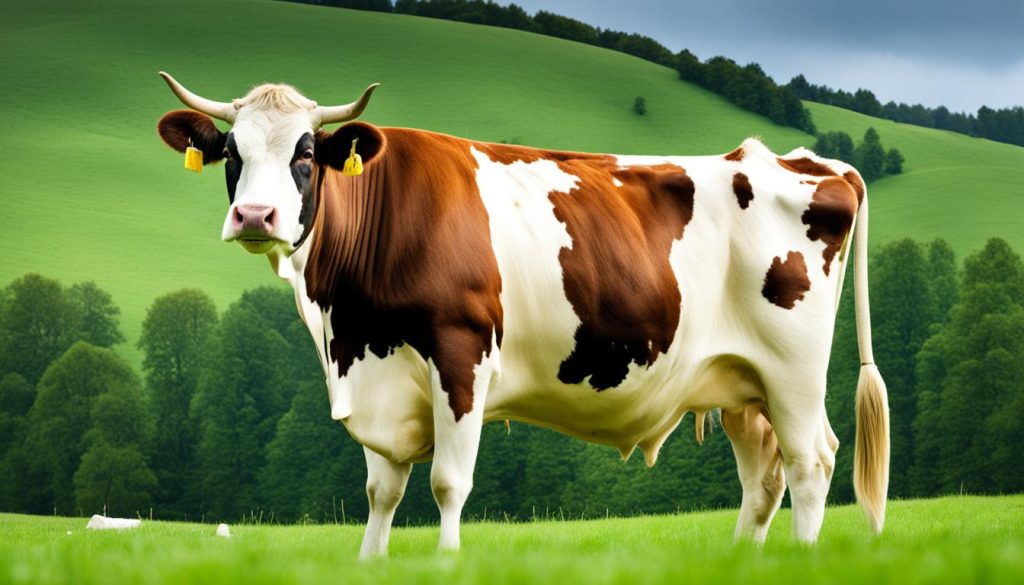
The shorter lifespan of dairy cattle can be attributed to the intensive nature of dairy farming. These cows are subjected to rigorous milking schedules and are often bred for high milk production, which can impact their overall health and longevity. In contrast, beef cattle are typically raised for meat production, and their lifespan is not as heavily influenced by intensive production practices.
The average lifespan of cows, whether dairy or beef, is influenced by several factors. Genetics, nutrition, veterinary care, housing conditions, and overall animal welfare play significant roles in determining the lifespan of these animals. Farmers who prioritize the well-being of their cattle and provide optimal care can help extend their lifespan.
The differences in the lifespan of dairy and beef cattle highlight the importance of understanding the specific needs and challenges associated with each type of cattle. By implementing best practices and adopting innovative approaches, farmers can strive to raise healthier and longer-lived cattle, ensuring the well-being of these animals throughout their lives.
Understanding Cattle Longevity in Farming
When it comes to farming, understanding the factors that influence cattle lifespan is crucial for ensuring the health and well-being of these animals. Cattle, like any living beings, are affected by various elements that can impact their longevity. Several factors play a role in determining the lifespan of cattle. These include their living conditions, health, and genetics. Let’s explore each of these elements in more detail.
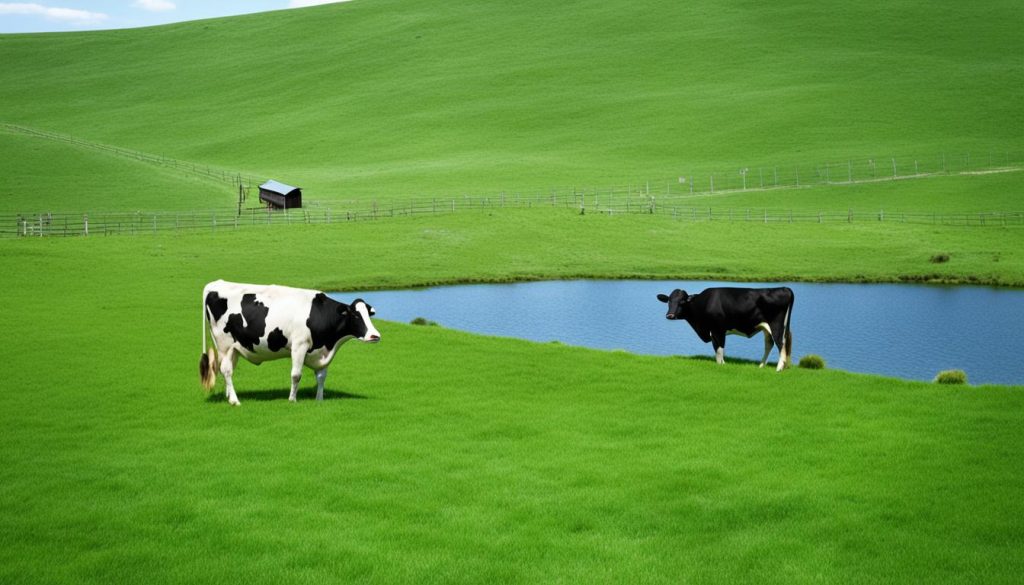
When it comes to dairy cows, their lifespan on farms tends to be shorter compared to beef cattle. This can be attributed to several reasons, including the demands of milk production and the associated health issues that can arise. Dairy cows are often subjected to intensive breeding and milking schedules, which can lead to increased stress levels and a higher risk of metabolic diseases. These factors, combined with the physical strain of lactation, can contribute to a shorter lifespan for dairy cows.
The Impact of Selective Breeding on Cattle Life Expectancy
Selective breeding has played a significant role in shaping the characteristics of cattle breeds over the years. While it has led to desired traits such as increased milk production or faster growth rates, it has also inadvertently affected the overall life expectancy of cattle.
Selective breeding for specific traits has sometimes resulted in unintended consequences, such as a higher susceptibility to certain health conditions or reduced overall resilience. These factors can contribute to a shorter lifespan in specific cattle breeds. Farmers and breeders need to consider the long-term implications of selective breeding practices and strive for a balance between desired traits and overall animal well-being.
Table: Factors Influencing Cattle Lifespan
| Living Conditions | Health | Genetics |
|---|---|---|
| Proper housing and environment | Regular veterinary care | Breeding practices |
| Access to clean water and nutritious feed | Disease prevention and treatment | Familial health history |
| Minimal stress and handling | Parasite control | Inherited traits |
Understanding the factors influencing cattle lifespan, as well as the impact of selective breeding on their life expectancy, is essential for promoting the well-being of these animals on farms. By prioritizing the health and welfare of cattle, farmers can contribute to longer, healthier lives for their herds.
The Natural Behaviors of Cattle and Their Effects on Longevity
Cattle, being herd animals, exhibit a range of natural behaviors that contribute to their overall well-being and longevity. Understanding these behaviors is crucial for ensuring their optimal health and productivity on farms and ranches. Next, we will explore the feeding habits, digestive health, social structures, and resting patterns of cattle, and how they impact their longevity.
Feeding Habits and Digestive Health
The feeding habits of cows play a significant role in their overall health and longevity. Cattle are herbivores with a unique digestive system designed to efficiently break down plant materials. They have a four-compartment stomach that enables them to convert fibrous plant matter into nutrients.
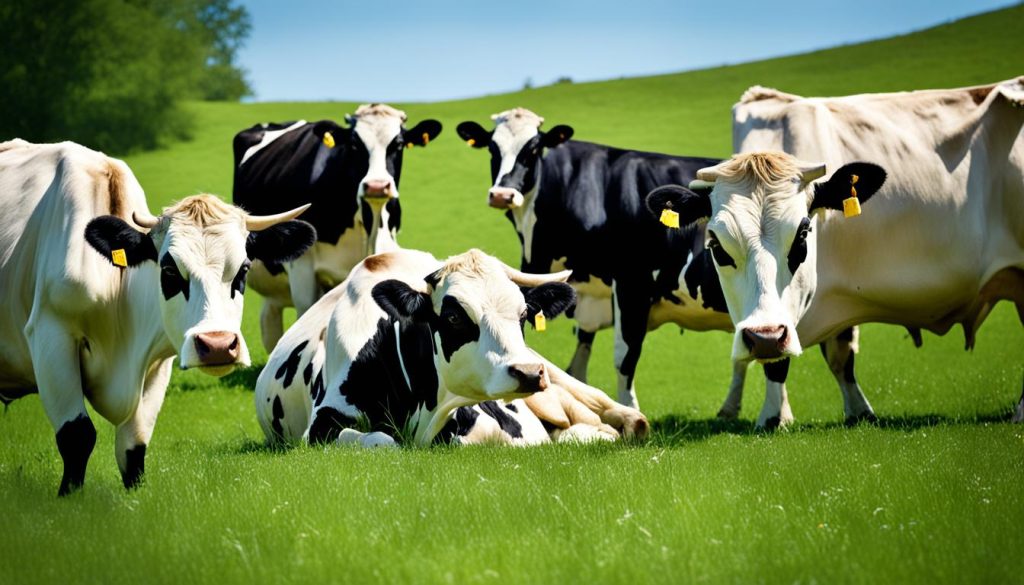
Cows are ruminants, meaning they regurgitate and re-chew their food in a process called rumination. This allows them to extract the maximum nutritional value from their diet, including the cellulose found in grasses and forages. Proper nutrition and a balanced diet are essential for maintaining a cow’s digestive health, preventing diseases, and supporting their longevity.
Social Structures Within Herds
Cattle are highly social animals that thrive in herds. They form complex social structures within their groups, which can include dominance hierarchies and strong bonds between individuals. These social interactions among cows contribute to their overall well-being and can have a significant impact on their longevity.
Cows within a herd establish social relationships and form alliances, which can help protect them from predators and improve their overall stress levels. Strong social connections also provide opportunities for social learning and the transmission of knowledge and behaviors that can contribute to their survival.
Resting and Rumination Patterns
Resting and rumination are vital behaviors for cattle and play a crucial role in their longevity. Cows spend a significant amount of time each day resting, which allows them to conserve energy, repair tissues, and maintain overall health. Proper resting patterns are essential for reducing stress and supporting a cow’s immune system.
Rumination, the process of regurgitating and re-chewing their food, also contributes to a cow’s overall well-being and longevity. By chewing their food thoroughly, cows ensure that they extract maximum nutrients and improve their digestion. The act of rumination also helps prevent digestive disorders and promotes a healthy microbial population in their stomachs.
How Long Does a Cow Live: Comparing Dairy and Beef Breeds
When considering the lifespan of cattle, it’s important to note that there are significant differences between dairy and beef breeds. This section will compare the lifespans of different dairy and beef cattle breeds, shedding light on the average lifespan of popular breeds in both categories. To better understand the lifespan of dairy and beef breeds, let’s take a closer look at some notable examples:
| Cattle Breed | Average Lifespan |
|---|---|
| Holstein (Dairy) | 5-7 years |
| Jersey (Dairy) | 9-14 years |
| Angus (Beef) | 9-16 years |
| Hereford (Beef) | 10-15 years |
As the table shows, dairy breeds such as Holsteins and Jerseys generally have shorter lifespans, ranging from 5 to 14 years. On the other hand, beef breeds like Angus and Hereford can live slightly longer, with average lifespans ranging from 9 to 16 years.
It’s important to note that these are average lifespan ranges, and individual circumstances can vary. Factors such as genetics, nutrition, health care, and overall management practices can all influence the lifespan of dairy and beef cattle. While dairy cattle may have shorter lifespans, they play a crucial role in milk production. Beef cattle, on the other hand, are primarily raised for meat production. These differing purposes, along with selective breeding practices, contribute to the variation in lifespans between dairy and beef breeds.
Understanding the average lifespans of different cattle breeds can help farmers and ranchers make informed decisions about breed selection and management practices, ultimately contributing to the well-being and longevity of their herds.
The Effects of Animal Welfare on Cattle’s Lifespan
When it comes to the lifespan of cattle, animal welfare plays a crucial role. The well-being of cows directly impacts their overall health and longevity. By establishing good welfare practices and prioritizing veterinary care, farmers can extend the lives of their cattle and ensure their long-term well-being.
Establishing Good Welfare Practices for Longevity
To promote optimal welfare and enhance the lifespan of cattle, it is essential to implement good welfare practices on farms. This includes providing appropriate nutrition, clean and comfortable housing, access to fresh water, and ample space for movement and exercise. By attending to the physical, mental, and social needs of cows, farmers can create an environment that supports their long and healthy lives.
Paying attention to the emotional well-being of cattle is also crucial. Offering social interaction, minimizing stressors, such as loud noises or sudden changes in routine, and providing opportunities for natural behaviors can significantly contribute to their overall welfare. Cows that are content and stress-free are more likely to lead longer and healthier lives.
The Role of Veterinary Care in Extending Cattle Lives
Veterinary care is an indispensable aspect of ensuring the well-being and longevity of cattle. Regular check-ups, vaccinations, and prompt attention to health concerns are essential for maintaining the health of cows. Veterinarians play a vital role in preventing and treating diseases, managing reproductive health, and providing guidance on nutrition.
Additionally, veterinarians can assist in identifying and managing any potential welfare issues that may arise on the farm. By working closely with these professionals, farmers can implement proactive measures to address health and welfare challenges, ultimately benefiting the lifespan of their cattle.
| Benefits of Animal Welfare Practices and Veterinary Care for Cattle |
|---|
| Prolongs cattle lifespan |
| Reduces the risk of diseases |
| Enhances overall well-being |
| Improves reproductive health |
| Minimizes stress and promotes contentment |
Calving and Motherhood: How Reproduction Impacts Longevity
Reproduction plays a crucial role in the lifespan of cattle. The process of calving, along with the demands of motherhood, can have a significant impact on the overall longevity of cows.
When a cow goes through the calving process, it undergoes a series of physical and hormonal changes. This period can be both physically and emotionally demanding for the cow, requiring extra energy and resources to support the growth and development of the calf.
During calving, cows may experience stress, fatigue, and temporary health issues. This can temporarily lower their immune system, making them more susceptible to diseases and other health complications. While cows are generally resilient animals, the combination of calving and the subsequent demands of motherhood can affect their long-term well-being.
The demands of motherhood also impact a cow’s lifespan. Once a calf is born, the cow becomes responsible for its care and nurturing. This includes providing milk for the calf, which requires additional energy and resources from the cow’s body.
The intense physical demands of motherhood can lead to gradual wear and tear on the cow’s body over time. The constant cycle of pregnancy, calving, and lactation can cause increased stress on the cow’s reproductive and musculoskeletal systems. As the cow ages and goes through multiple reproductive cycles, these physiological stresses may contribute to a shortened lifespan.
It’s important for farmers and ranchers to properly manage the reproductive cycle of their cattle to promote longevity. This includes providing adequate nutrition, regular veterinary care, and implementing good herd management practices. By prioritizing the health and well-being of cows during calving and motherhood, farmers can help ensure their cattle live longer, healthier lives.
| Impact of Reproduction on Cattle Lifespan | |
|---|---|
| Calving process | Involves physical and hormonal changes that can affect cow health |
| Motherhood demands | Cows require extra energy and resources to support calf growth and development |
| Stress and fatigue | Calving and motherhood can lead to temporary health issues and lower the cow’s immune system |
| Physiological stresses | Reproductive cycles and lactation can cause wear and tear on the cow’s body |
| Proper management | Adequate nutrition, regular veterinary care, and good herd management practices are essential for promoting longevity |
Raising Long-Lived Cattle: Best Practices and Innovations
When it comes to raising long-lived cattle, implementing the right practices is key. By prioritizing the well-being and health of your herd, you can ensure that your cattle live longer and thrive on your farm.
One of the best practices for promoting cattle longevity is to provide a nutritious and balanced diet. Feeding your cattle high-quality forage and supplements can help prevent nutritional deficiencies and promote overall health. Additionally, ensuring access to clean water at all times is essential for their well-being.
Implementing a comprehensive healthcare program is also crucial for raising long-lived cattle. Regular veterinary care, including vaccinations, deworming, and hoof trimming, can help prevent disease and ensure that any health issues are promptly addressed. Moreover, routine monitoring of your herd’s health and implementing biosecurity measures can further enhance their longevity.
Advancements in cattle genetics and breeding techniques have opened up new opportunities to improve cattle longevity. By selecting breeding stock with robust health traits, you can pass on desirable genetic traits to future generations. Genetic testing can help identify individuals with a higher resistance to diseases, better fertility, and increased lifespan.
Innovations in cattle farming have also played a role in promoting longevity. Technologies such as automated feeding systems, temperature-controlled barns, and computerized monitoring systems can help optimize cattle care and reduce stress on the animals.
By following these best practices and embracing innovations, you can create an environment that fosters the long and healthy lives of your cattle. Ultimately, a commitment to their well-being will not only benefit your herd’s longevity but also contribute to the success and sustainability of your farm.
FAQs on how long does a cow live
Why do dairy cows have shorter lives compared to beef cattle?
Dairy cows are often subjected to more demanding conditions compared to beef cattle. They experience higher levels of stress due to frequent milking, breeding practices, and the demands of producing milk. This can contribute to a shorter lifespan.
What factors influence the lifespan of cattle?
Several factors can affect the lifespan of cattle, including their living conditions, health, and genetics. Good nutrition, proper veterinary care, and providing a stress-free environment can contribute to their longevity.
How does selective breeding impact cattle life expectancy?
Selective breeding practices have been implemented to enhance certain traits in cattle. While this has led to improvements in production, such as increased milk yields or better meat quality, it can also have unintended consequences on the overall health and lifespan of cattle.
What are the natural behaviors of cattle and how do they impact their longevity?
Cattle are social animals that have specific feeding, social, and resting behaviors. Proper feeding habits, good digestive health, and ensuring adequate rest can positively affect their overall health and longevity.
How do the lifespans of different dairy and beef cattle breeds compare?
Different cattle breeds can have varying lifespans. While average lifespans can range from 5-7 years for dairy cows and 15-20 years for beef cattle, individual breed characteristics can also influence their longevity.
What is the impact of animal welfare on the lifespan of cattle?
Establishing good animal welfare practices, such as providing appropriate housing, nutrition, and medical care, plays a significant role in extending the lifespan of cattle. Veterinary care is crucial in ensuring their overall health and well-being.
How does reproduction, such as calving, impact the lifespan of cows?
The demands of reproduction, such as the stress of calving and the demands of motherhood, can have an impact on a cow’s overall lifespan. Proper management and support during the calving process can minimize stress and improve longevity.

